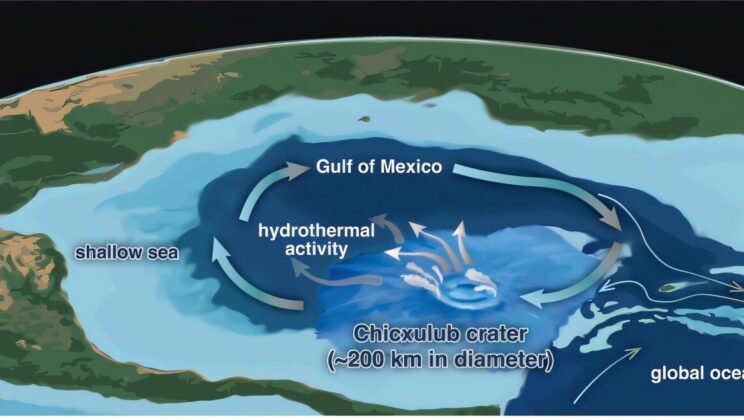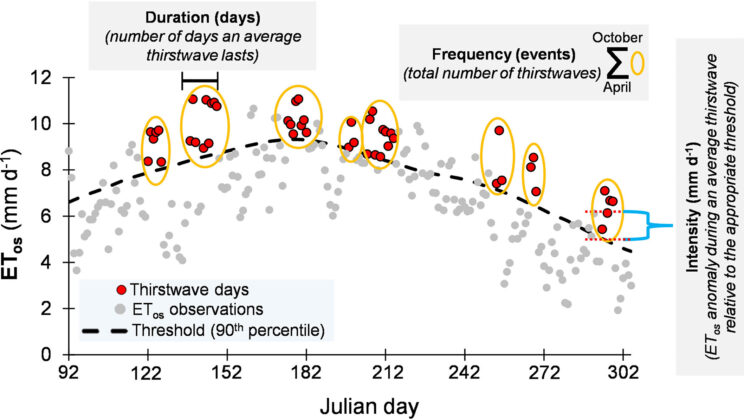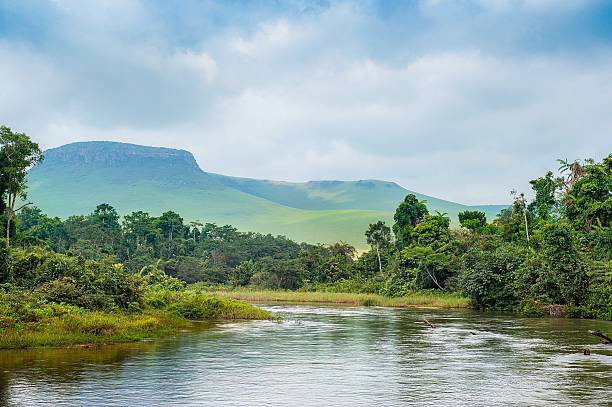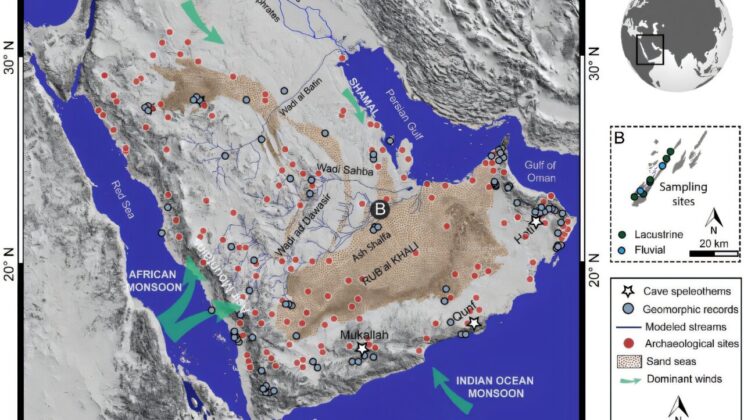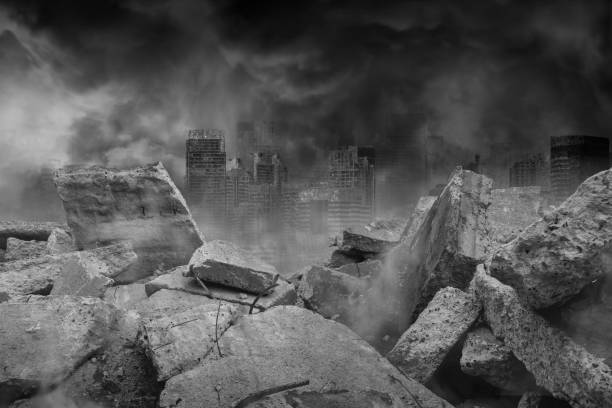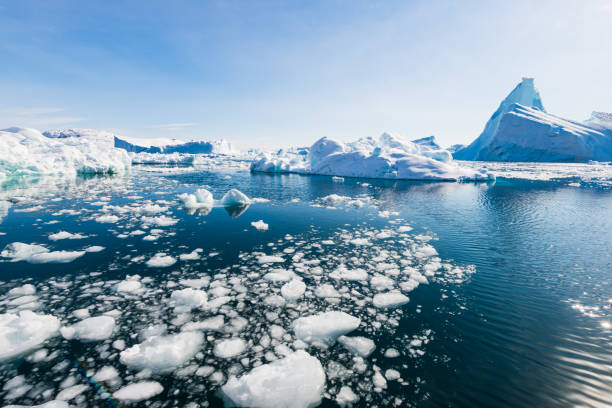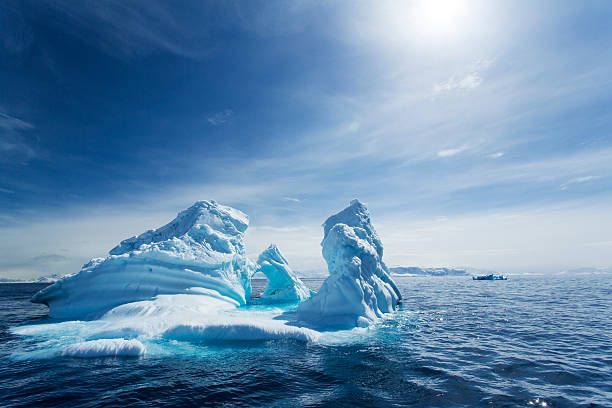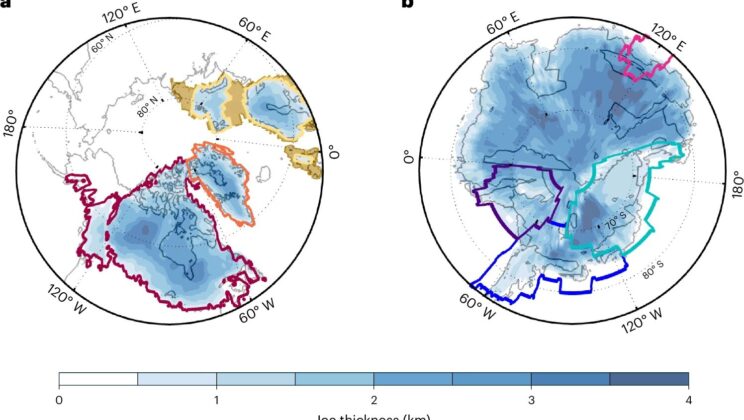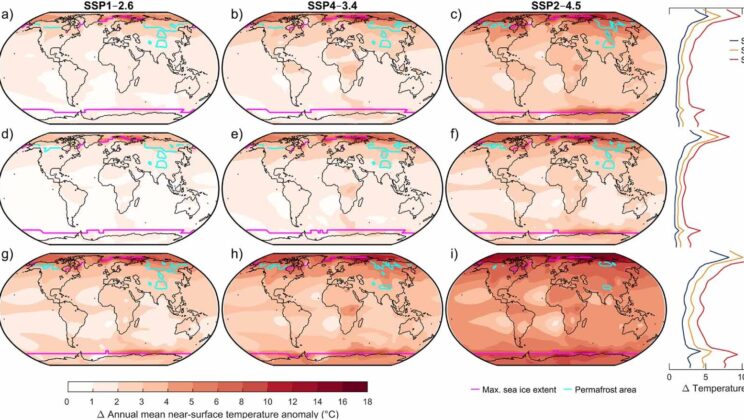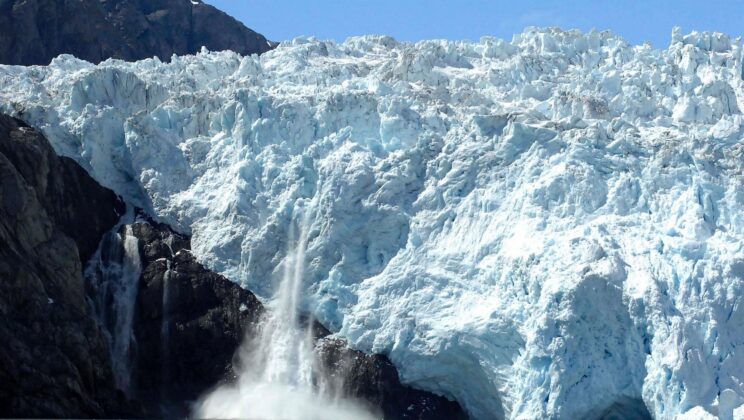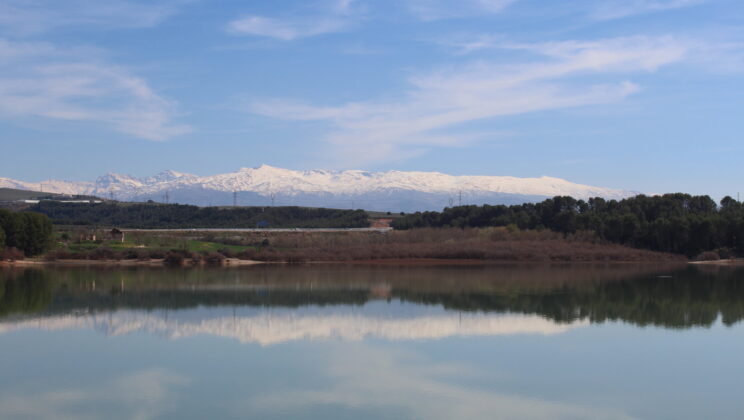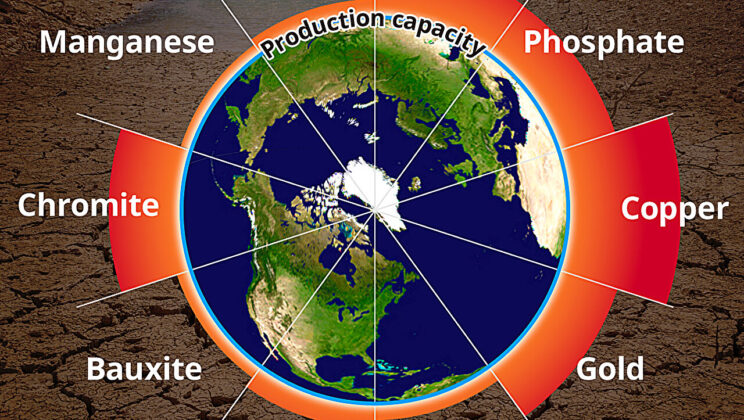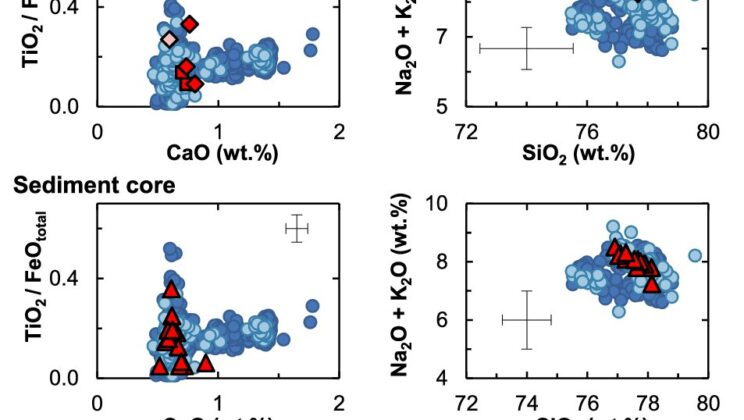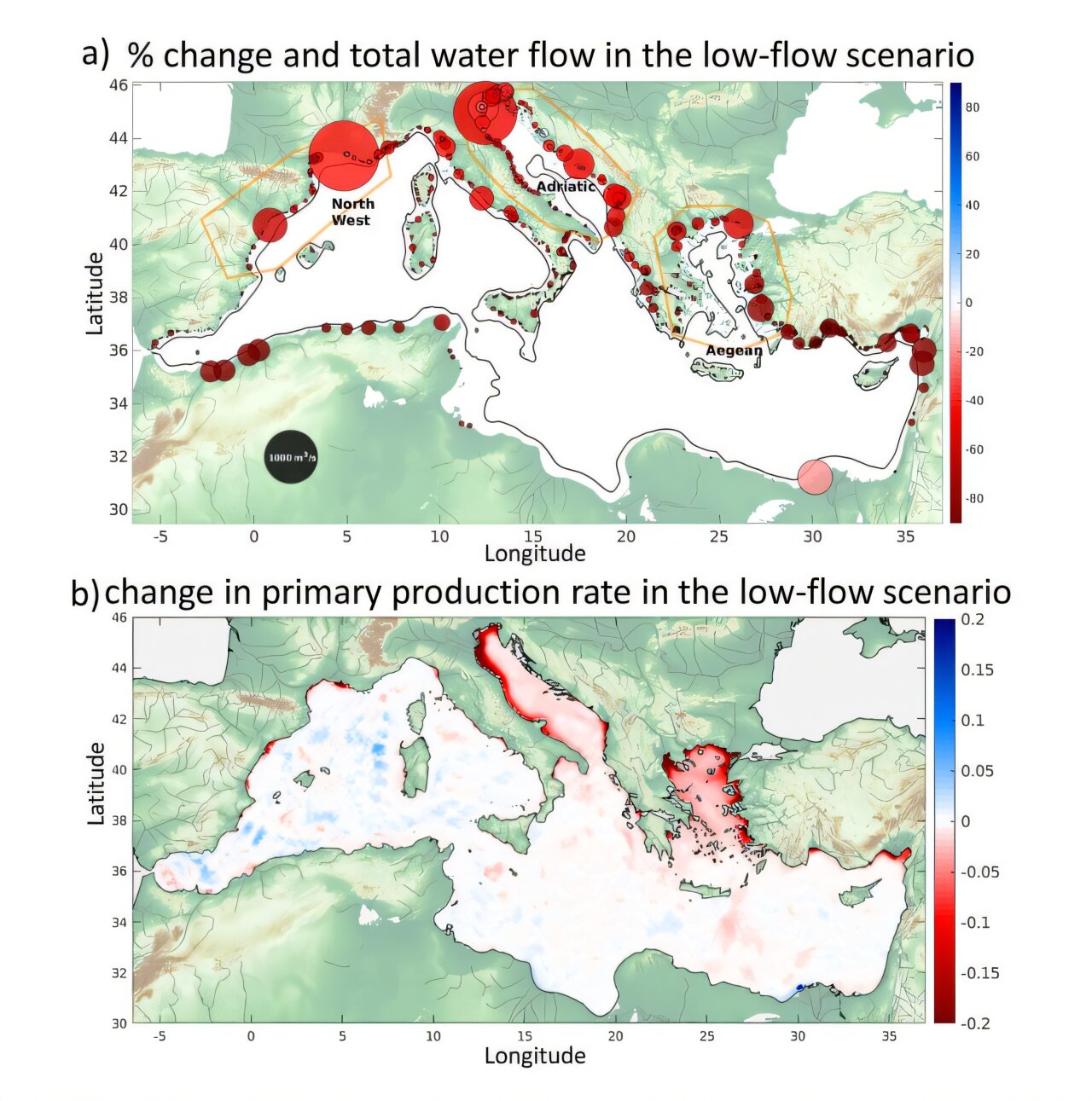We’ve heard it time and again—if we’re serious about tackling climate change, we must cut carbon dioxide (CO₂) emissions. That’s the foundation. But what if that’s not enough? The reality…
Category: Earth Science
From Destruction to Rebirth: How the Dinosaur-Killing Asteroid Sparked an Undersea Oasis of Life
About 66 million years ago, a cataclysmic event reshaped the trajectory of life on Earth. An asteroid, nearly the size of Mount Everest, slammed into what is now the Yucatán…
Thirstwaves: A New Climate Threat to Agriculture
As the world grapples with the ever-encroaching effects of climate change, one of the most insidious impacts is the increasing thirst of our atmosphere. This phenomenon, referred to as “evaporative…
Global Study Reveals Widespread Oxygen Depletion in Rivers and Lakes
Rivers, streams, lakes, and reservoirs—those shimmering arteries that wind through our landscapes—do more than add beauty to our world. They are alive in the truest sense: flowing, cycling, and breathing.…
The Hidden Lakes and Rivers of the Empty Quarter
The vast expanse of the Arabian Desert, specifically the Empty Quarter (Rub’ al Khali), is renowned today for its dry, arid, and inhospitable environment. However, this desert, now one of…
Can the Sun Trigger Earthquakes? Scientists Uncover a Surprising Connection
Seismology, the study of earthquakes and seismic waves, has come a long way in explaining the basic mechanics behind earthquakes. Scientists understand that earthquakes occur when tectonic plates move, causing…
Why Do Earthquakes Happen?
Earthquakes are some of the most powerful and unpredictable natural events on Earth. They are sudden and violent shaking of the ground that occurs when there is a release of…
What is an Earthquake? Understanding the Shaking Ground Beneath Us
An earthquake is one of nature’s most powerful and destructive forces, shaking the Earth’s surface with a tremendous force that can level cities, cause tsunamis, and change the landscape. The…
Arctic Sea Ice Hits Record-Low Winter Peak, Signaling Accelerated Climate Change
The Arctic has just recorded its weakest winter sea ice buildup in 47 years of satellite monitoring, a stark warning of the accelerating impact of climate change. According to data…
The Antarctic Paradox: Why Southern Ocean Cooling Confounds Climate Models
For decades, global climate models have predicted that the ocean surrounding Antarctica should be warming due to climate change. However, real-world data tells a different story—these waters have actually cooled…
Meltwater Pulse 1a: Multi-Continent Ice Melt Caused Rapid Sea Level Rise
Around 14,500 years ago, at the tail end of the last Ice Age, the Earth underwent one of the most dramatic climate shifts in recorded history. The event, known as…
Global Heating Over the Next Millennium: Why Climate Change May Be Worse Than Expected
The Earth’s climate is becoming increasingly sensitive to human actions, with recent studies revealing that global heating over the next millennium could exceed previous projections, primarily due to carbon cycle…
Vanishing Ice, Vanishing Life: How Shrinking Andean Glaciers Threaten the Water Security of 90 Million People
At the heart of South America lies a towering expanse of ancient ice—the glaciers of the Andes. For millennia, these majestic ice giants have quietly performed one of nature’s most…
The Hidden Danger in Our Waters: How Sunlight Supercharges a Potent Greenhouse Gas
When we hear the phrase greenhouse gas, most of us picture carbon dioxide (CO2). It’s the poster child of climate change, the gas we blame for rising temperatures and melting…
The Hidden Water Footprint of Green Technologies: Why Sustainable Resource Production Is Critical for a Decarbonized Future
As the world races towards a cleaner, greener future, the demand for renewable energy technologies and energy storage systems is soaring. Wind turbines, solar panels, electric vehicles (EVs), and massive…
Los Chocoyos Supereruption: Global Cooling, Not Ice Age
An international team of Earth scientists, hydrologists, chemists, and physicists has uncovered compelling evidence that significantly reshapes our understanding of ancient volcanic activity and its global impact. Their research points…
Greenland’s Ice Sheet Nearing a Point of No Return
Greenland’s ice sheet, spanning over 1.7 million square kilometers, stands as the largest freshwater reservoir in the Northern Hemisphere. However, this colossal body of ice is undergoing a rapid transformation.…
Study Suggests Dynamic Interaction Between Earth’s Inner and Outer Cores
A groundbreaking study conducted by scientists at the University of Southern California (USC) has shed new light on the Earth’s inner core, revealing unexpected changes near its surface. Published in…
Drowning Rivers, Dying Seas: Climate Change Threatens the Mediterranean
The Mediterranean Sea, known for its rich biodiversity and its significance to regional economies, is facing growing pressures due to climate change and increasing water demand. New research emphasizes the…
Elevated Particle Formation in Urban Environments: Implications for Climate and Cloud Formation
Particles in the atmosphere play an indispensable role in climate regulation by influencing key processes such as cloud formation and the planet’s radiation balance. In urban environments, research has predominantly…

